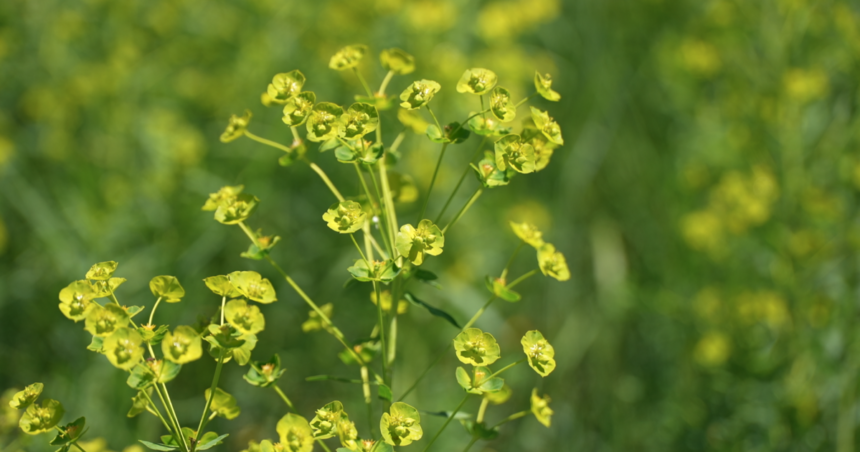If you’re on a hike, and you see some beautiful wildflowers, you should know they might actually be terrible for the environment. Let’s talk about noxious weeds.
I asked some locals walking around Peets Hill, “Do you know what a noxious weed is?”
To my surprise, many people answered yes. But when I showed them a pretty yellow flower called leafy spurge and asked, “If you saw this plant on a hike would you think it was a noxious weed?”
Most people answered “No.”
So what is a noxious weed?
“Noxious weeds spread so quickly that they’ll take over an area and choke out all of the good native species that we have here,” Melissa Bradford told me.
Melissa has been in the weed killing business for 35 years. She started young, spraying on her family’s farm at just eight years old. Now she’s the co-owner of PPYC Spray and Ag and knows a thing or two about noxious weeds.
“They erode waterways. And there’s lots of examples here in Bozeman. We’ve got Canada thistle, houndstongue, oxeye daisy, Hoary alyssum, St. John’s Wort, leafy spurge.”
Thats right. All those beautiful wildflowers you love to see on hikes are actually terrible for the environment. They can seriously impair wildlife habitat, agriculture, and recreational opportunities—which is why on Wednesday you might have seen Melissa out riding her ATV, but it wasn’t just for fun.
“We are out spot spraying noxious weeds on Bozeman Health property, and a few of the Gallatin Valley Land Trust trails,” says Melissa.
PPYC Spray and Ag tackled the Highland Glen and Wellness Trail connection to Haggerty Lane, the Painted Hills area, Burke Park, and the Peets Hill expansion. And if you were planning on hitting those trails but now you’re concerned about the weed killer?
“The products we use have no grazing restrictions, so the grazing animals can be in the field with us while we spray. And we just follow the label, and they’re pretty safe,” says Melissa.
And some of you gardeners out there may be thinking these weeds could just be pulled by hand, and we could skip the spray job altogether.
But Melissa tells me, “Some things can be mowed. Some things can be pulled. But a lot of these plants have really deep perennial roots that are eight feet, 10 feet, 12 feet deep. Leafy Spurge is up to like 30 feet deep. And there’s nothing you can do with those except for actually doing a selective herbicide, kill off the broad leaf weed, and let the grasses choke it out and take over.”
Stay tuned with Gallatin Valley Land Trust for future noxious weed mitigation.





